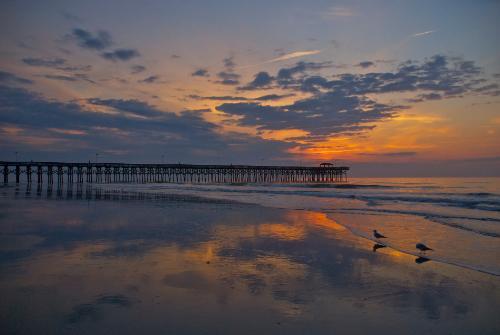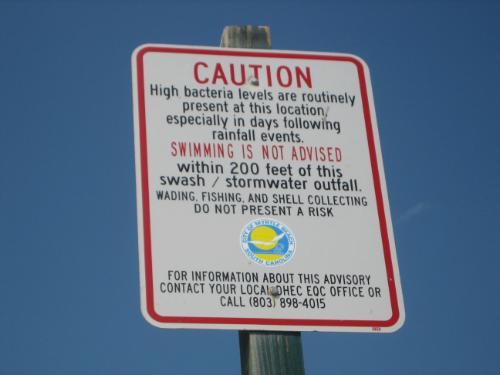EQL Projects
Tracking Sources of Fecal Pollution
The Grand Strand coastline of northeastern South Carolina stretches for more than 60 miles in Horry and Georgetown counties.
Eighty-three (83) sites in these counties have been documented by the South Carolina Department of Health and Environmental Control (SC DHEC) as having fecal indicator bacteria (FIB) impairments.
Sites impaired by FIB may be subject to beach closures for recreational swimming and fishing due to health concerns. Since the economy of the Grand Strand is driven by beach-related tourism, restrictions on beach usage as a result of polluted water can have adverse effects on the economy.

| (l-r) 2nd Avenue Pier in Myrtle Beach, South Carolina, and a sign near tidal creek also in Myrtle Beach. |
In the next few pages, we want to provide you with information about:
- Sources of FIB
- Tools that can be used to determine sources of FIB in order to optimize remediation efforts
- Our experience using these tools during a pilot study in Myrtle Beach, South Carolina.
But first, we'd like to acknowledge our project partners:




